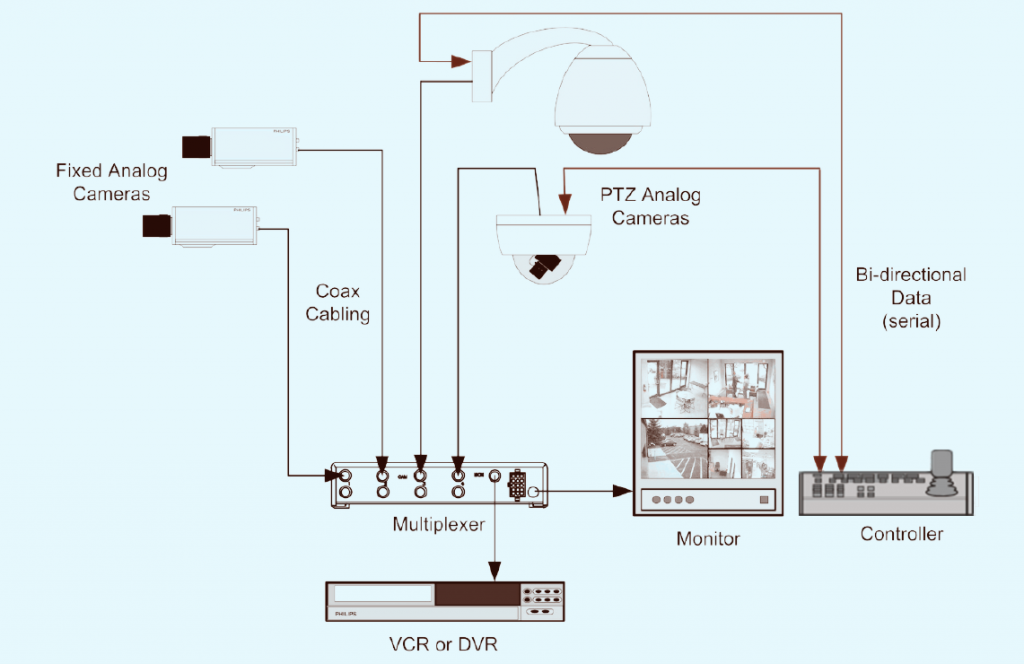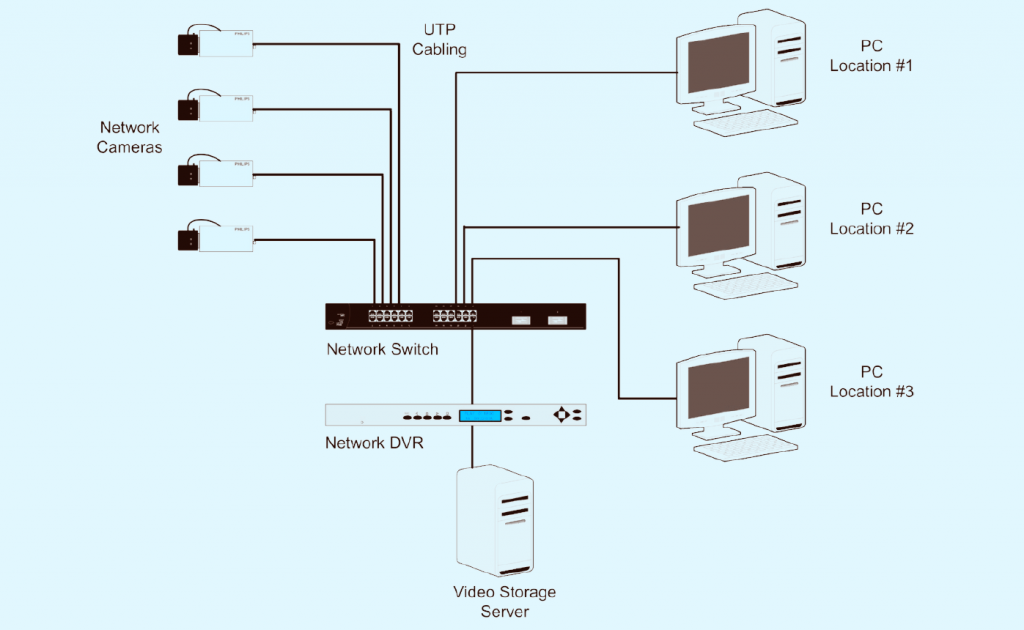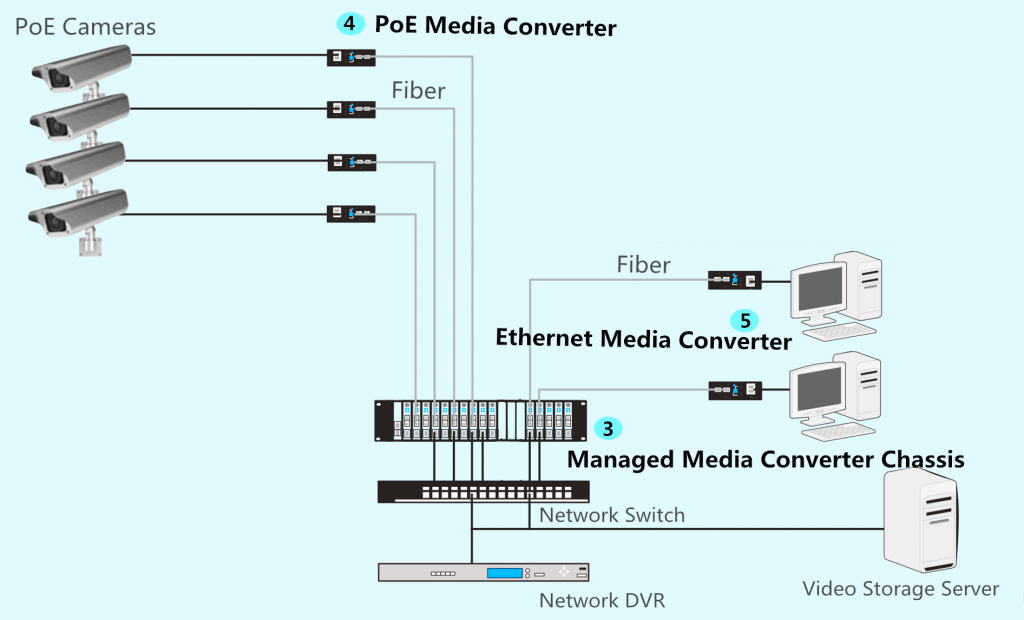Video Security and Surveillance Network Design With Media Converters
In Market Media converters are simple and flexible devices coming into various types, which work on the physical layer of the network to provide a simple way to convert one media type into another. The most commonly utilized functions of media converters are distance extension by transmitting one type of signal into single-mode fiber, or introducing fiber optic cabling in the existing copper-based network without making other change. It is an ideal solution to save more money and manpower or time to upgrade networks. Media converter can be installed almost everywhere in a network, which makes it a popular choice. What’s more, media converters that available on the market are being designed to perform many other functions. Video security and surveillance system is one of the fields widely using media converters. This post will offer details solutions about how to use fiber optic media converter for cctv cameras network.
Video Security and Surveillance Network Introduction
Video security and surveillance are necessary and closely related to most industries and daily life nowadays. Cameras are almost everywhere in our cities and towns, which provide great benefits for corporate and government. Many types of video security and surveillance networks that are designed for applications in different environments. Analog video network and IP video network are the two most commonly used types for security and surveillance video transmission. The former one is invented before the latter one and is a cost-effective solution for video surveillance in small area with analog closed circuit television (CCTV) cameras. It is also a good choice for video security at home.
While IP video is more advance and can provide better image quality and network performance in large scale. The biggest character of IP video surveillance network is that every camera has its own IP address to tell itself from the others in the whole video network. Currently, with the demand for higher transmission speed, image quality and longer transmission distances, fiber optic cables are widely used in the video network. Thus, in both of the two surveillance networks, media conversion are necessary, like conversions between fiber and copper or video to fiber. The following will offer the cabling solutions that using fiber optic media converter for cctv.
Analog Video Network Cabling Infrastructure
In a typical analog video network (shown in the above picture), analog CCTV cameras are connected to a central management room or devices (VCR—video cassette recorder or DVR—digital video recorder) via coaxial cables. If the camera has PTZ (Pan-Tilt-Zoom) function, an additional controller is added.
As mentioned, the performance and the transmission distance are limited by using copper cables. To connector more fixed analog cameras and PTZ analog cameras, fiber optic cable should be introduced to this typical network. Then fiber media converters are the best solutions. The following picture shows the basic structure or an upgraded version of a typical analog video structure which using fiber optic cable in this network.
To connect the fixed analog cameras to the server room, a pair of fiber media converters should be added between the server room and cameras. Video signals will be transmitted into fiber optic signals. For analog PTZ cameras, there are two types of signals should be converted into fiber optic signals, one for video and one for data. Thus, two different media converters or a fiber media converter that covers the two functions should be installed.
It is known that fiber media converters should be used in pairs. As one of the media converters is in deploy on the fiber end that near the camera, the other one should be deploy on the other fiber ends that near the server room. For better management, all the fiber media converters at the fiber end near the server room could be installed in a managed fiber media converter rack chassis.
IP Video Network Cabling Infrastructure
In a typical IP video surveillance network (shown in the above picture), IP cameras are connected directly to the local area network and transport video across the IP network via UTP cabling and switches. PoE IP cameras are also time-save and cost-effect solutions. Video can be recorded to any PC or server on the network. To introduce fiber optic cabling in to this typical IP video network, the method is similar to introducing fiber optic into an analog video network as described in the above paragraph.
In the following case (shown in the following picture), PoE IP cameras are used. A pair of PoE media converters should be installed on both ends of a length of fiber optic cable to achieve the conversion between video and fiber. At the computer side where the videos are recorded, a pair of Ethernet media converters should be installed. All of the fiber optic media converter for cctv near the network switches can be set at a managed media converter chassis before the connected to the switches.
Video Security and Surveillance Network Solution
The following chart list the related fiber optic media converter for cctv required for analog video and IP video security and surveillance network. The numbers in the following table are highlighted in the above pictures and represent the corresponding devices. Kindly contact Ashish9224@gmail.com for more details.




No comments:
Post a Comment